
User Guide
SW USB Series
Switchers
USB Switchers
68-1517-01 Rev. F
02 12

ii
This symbol is intended to alert the user of important operating and
maintenance (servicing) instructions in the literature provided with the
equipment.
This symbol is intended to alert the user of the presence of uninsulated
dangerous voltage within the product enclosure that may present a risk of
electric shock.
Caution
Read Instructions • Read and understand all safety and operating instructions before using the equipment.
Retain Instructions • The safety instructions should be kept for future reference.
Follow Warnings • Follow all warnings and instructions marked on the equipment or in the user information.
Avoid Attachments • Do not use tools or attachments that are not recommended by the equipment
manufacturer because they may be hazardous.
Warning
Power sources • This equipment should be operated only from the power source indicated on the product. This
equipment is intended to be used with a main power system with a grounded (neutral) conductor. The third
(grounding) pin is a safety feature; do not attempt to bypass or disable it.
Power disconnection • To remove power from the equipment safely, remove all power cords from the rear of
the equipment, the desktop power module (if detachable), or the power source receptacle (wall plug).
Power cord protection • Power cords should be routed so that they are not likely to be stepped on or pinched
by items placed upon or against them.
Servicing • Refer all servicing to qualified service personnel. There are no user-serviceable parts inside. To prevent
the risk of shock, do not attempt to service this equipment yourself because opening or removing covers may
expose you to dangerous voltage or other hazards.
Slots and openings • If the equipment has slots or holes in the enclosure, these are provided to prevent
overheating of sensitive components inside. These openings must never be blocked by other objects.
Lithium battery • There is a danger of explosion if battery is incorrectly replaced. Replace it only with the
same or equivalent type recommended by the manufacturer. Dispose of used batteries according to the
manufacturer instructions.
Ce symbole sert à avertir l’utilisateur que la documentation fournie avec le
matériel contient des instructions importantes concernant l’exploitation et la
maintenance (réparation).
Ce symbole sert à avertir l’utilisateur de la présence dans le boîtier
de l’appareil de tensions dangereuses non isolées posant des risques
d’électrocution.
Attention
Lire les instructions• Prendre connaissance de toutes les consignes de sécurité et d’exploitation avant
d’utiliser le matériel.
Conserver les instructions• Ranger les consignes de sécurité afin de pouvoir les consulter à l’avenir.
Respecter les avertissements • Observer tous les avertissements et consignes marqués sur le matériel ou
présentés dans la documentation utilisateur.
Eviter les pièces de fixation • Ne pas utiliser de pièces de fixation ni d’outils non recommandés par le
fabricant du matériel car cela risquerait de poser certains dangers.
Avertissement
Alimentations • Ne faire fonctionner ce matériel qu’avec la source d’alimentation indiquée sur l’appareil. Ce
matériel doit être utilisé avec une alimentation principale comportant un fil de terre (neutre). Le troisième
contact (de mise à la terre) constitue un dispositif de sécurité : n’essayez pas de la contourner ni de la
désactiver.
Déconnexion de l’alimentation• Pour mettre le matériel hors tension sans danger, déconnectez tous les
cordons d’alimentation de l’arrière de l’appareil ou du module d’alimentation de bureau (s’il est amovible) ou
encore de la prise secteur.
Protection du cordon d’alimentation • Acheminer les cordons d’alimentation de manière à ce que personne
ne risque de marcher dessus et à ce qu’ils ne soient pas écrasés ou pincés par des objets.
Réparation-maintenance • Faire exécuter toutes les interventions de réparation-maintenance par un
technicien qualifié. Aucun des éléments internes ne peut être réparé par l’utilisateur. Afin d’éviter tout danger
d’électrocution, l’utilisateur ne doit pas essayer de procéder lui-même à ces opérations car l’ouverture ou le
retrait des couvercles risquent de l’exposer à de hautes tensions et autres dangers.
Fentes et orifices • Si le boîtier de l’appareil comporte des fentes ou des orifices, ceux-ci servent à empêcher les
composants internes sensibles de surchauffer. Ces ouvertures ne doivent jamais être bloquées par des objets.
Lithium Batterie • Il a danger d’explosion s’ll y a remplacment incorrect de la batterie. Remplacer uniquement
avec une batterie du meme type ou d’un type equivalent recommande par le constructeur. Mettre au reut les
batteries usagees conformement aux instructions du fabricant.
Safety Instructions • English
Consignes de Sécurité • Français
Sicherheitsanleitungen • Deutsch
Dieses Symbol soll dem Benutzer in der im Lieferumfang enthaltenen
Dokumentation besonders wichtige Hinweise zur Bedienung und Wartung
(Instandhaltung) geben.
Dieses Symbol soll den Benutzer darauf aufmerksam machen, daß im Inneren
des Gehäuses dieses Produktes gefährliche Spannungen, die nicht isoliert sind
und die einen elektrischen Schock verursachen können, herrschen.
Achtung
Lesen der Anleitungen • Bevor Sie das Gerät zum ersten Mal verwenden, sollten Sie alle Sicherheits-und
Bedienungsanleitungen genau durchlesen und verstehen.
Aufbewahren der Anleitungen • Die Hinweise zur elektrischen Sicherheit des Produktes sollten Sie
aufbewahren, damit Sie im Bedarfsfall darauf zurückgreifen können.
Befolgen der Warnhinweise • Befolgen Sie alle Warnhinweise und Anleitungen auf dem Gerät oder in der
Benutzerdokumentation.
Keine Zusatzgeräte • Verwenden Sie keine Werkzeuge oder Zusatzgeräte, die nicht ausdrücklich vom
Hersteller empfohlen wurden, da diese eine Gefahrenquelle darstellen können.
Vorsicht
Stromquellen • Dieses Gerät sollte nur über die auf dem Produkt angegebene Stromquelle betrieben werden.
Dieses Gerät wurde für eine Verwendung mit einer Hauptstromleitung mit einem geerdeten (neutralen) Leiter
konzipiert. Der dritte Kontakt ist für einen Erdanschluß, und stellt eine Sicherheitsfunktion dar. Diese sollte nicht
umgangen oder außer Betrieb gesetzt werden.
Stromunterbrechung • Um das Gerät auf sichere Weise vom Netz zu trennen, sollten Sie alle Netzkabel aus der
Rückseite des Gerätes, aus der externen Stomversorgung (falls dies möglich ist) oder aus der Wandsteckdose
ziehen.
Schutz des Netzkabels • Netzkabel sollten stets so verlegt werden, daß sie nicht im Weg liegen und niemand
darauf treten kann oder Objekte darauf- oder unmittelbar dagegengestellt werden können.
Wartung • Alle Wartungsmaßnahmen sollten nur von qualiziertem Servicepersonal durchgeführt werden.
Die internen Komponenten des Gerätes sind wartungsfrei. Zur Vermeidung eines elektrischen Schocks
versuchen Sie in keinem Fall, dieses Gerät selbst öffnen, da beim Entfernen der Abdeckungen die Gefahr eines
elektrischen Schlags und/oder andere Gefahren bestehen.
Schlitze und Öffnungen • Wenn das Gerät Schlitze oder Löcher im Gehäuse aufweist, dienen diese zur
Vermeidung einer Überhitzung der empndlichen Teile im Inneren. Diese Öffnungen dürfen niemals von
anderen Objekten blockiert werden.
Litium-Batterie • Explosionsgefahr, falls die Batterie nicht richtig ersetzt wird. Ersetzen Sie verbrauchte Batterien
nur durch den gleichen oder einen vergleichbaren Batterietyp, der auch vom Hersteller empfohlen wird.
Entsorgen Sie verbrauchte Batterien bitte gemäß den Herstelleranweisungen.
Este símbolo se utiliza para advertir al usuario sobre instrucciones
importantes de operación y mantenimiento (o cambio de partes) que se
desean destacar en el contenido de la documentación suministrada con los
equipos.
Este símbolo se utiliza para advertir al usuario sobre la presencia de
elementos con voltaje peligroso sin protección aislante, que puedan
encontrarse dentro de la caja o alojamiento del producto, y que puedan
representar riesgo de electrocución.
Precaucion
Leer las instrucciones • Leer y analizar todas las instrucciones de operación y seguridad, antes de usar el
equipo.
Conservar las instrucciones • Conservar las instrucciones de seguridad para futura consulta.
Obedecer las advertencias • Todas las advertencias e instrucciones marcadas en el equipo o en la
documentación del usuario, deben ser obedecidas.
Evitar el uso de accesorios • No usar herramientas o accesorios que no sean especificamente
recomendados por el fabricante, ya que podrian implicar riesgos.
Advertencia
Alimentación eléctrica • Este equipo debe conectarse únicamente a la fuente/tipo de alimentación eléctrica
indicada en el mismo. La alimentación eléctrica de este equipo debe provenir de un sistema de distribución
general con conductor neutro a tierra. La tercera pata (puesta a tierra) es una medida de seguridad, no
puentearia ni eliminaria.
Desconexión de alimentación eléctrica • Para desconectar con seguridad la acometida de alimentación
eléctrica al equipo, desenchufar todos los cables de alimentación en el panel trasero del equipo, o desenchufar
el módulo de alimentación (si fuera independiente), o desenchufar el cable del receptáculo de la pared.
Protección del cables de alimentación • Los cables de alimentación eléctrica se deben instalar en lugares
donde no sean pisados ni apretados por objetos que se puedan apoyar sobre ellos.
Reparaciones y mantenimiento • Solicitar siempre los servicios técnicos de personal calicado. En el interior
no hay partes a las que el usuario deba acceder. Para evitar riesgo de electrocución, no intentar personalmente
la reparación/mantenimiento de este equipo, ya que al abrir o extraer las tapas puede quedar expuesto a
voltajes peligrosos u otros riesgos.
Ranuras y aberturas • Si el equipo posee ranuras o orificios en su caja/alojamiento, es para evitar el
sobrecalientamiento de componentes internos sensibles. Estas aberturas nunca se deben obstruir con otros
objetos.
Batería de litio • Existe riesgo de explosión si esta batería se coloca en la posición incorrecta. Cambiar esta
batería únicamente con el mismo tipo (o su equivalente) recomendado por el fabricante. Desachar las baterías
usadas siguiendo las instrucciones del fabricante.
Instrucciones de seguridad • Español
安全须知 • 中文
这个符号提示用户该设备用户手册中有重要的操作和维护说明。
这个符号警告用户该设备机壳内有暴露的危险电压,有触电危险。
注意
阅读说明书 • 用户使用该设备前必须阅读并理解所有安全和使用说明。
保存说明书 • 用户应保存安全说明书以备将来使用。
遵守警告 • 用户应遵守产品和用户指南上的所有安全和操作说明。
避免追加 • 不要使用该产品厂商没有推荐的工具或追加设备,以避免危险。
警告
电源 • 该设备只能使用产品上标明的电源。 设备必须使用有地线的供电系统供电。 第三条线(
地线)是安全设施,不能不用或跳过 。
拔掉电源 • 为安全地从设备拔掉电源,请拔掉所有设备后或桌面电源的电源线,或任何接到市电
系统的电源线。
电源线保护 • 妥善布线, 避免被踩踏,或重物挤压。
维护 • 所有维修必须由认证的维修人员进行。 设备内部没有用户可以更换的零件。为避免出现触
电危险不要自己试图打开设备盖子维修该设备。
通风孔 • 有些设备机壳上有通风槽或孔,它们是用来防止机内敏感元件过热。 不要用任何东西
挡住通风孔。
锂电池 • 不正确的更换电池会有爆炸的危险。必须使用与厂家推荐的相同或相近型号的电池。按
照生产厂的建议处理废弃电池。

iii
FCC Class A Notice
This equipment has been tested and found to comply with the limits for a Class A digital device, pursuant to part 15
of the FCC Rules. Operation is subject to the following two conditions:
1. This device may not cause harmful interference.
2. This device must accept any interference received, including interference that may cause undesired operation.
The Class A limits are designed to provide reasonable protection against harmful interference when the equipment
is operated in a commercial environment. This equipment generates, uses, and can radiate radio frequency energy
and, if not installed and used in accordance with the instruction manual, may cause harmful interference to radio
communications. Operation of this equipment in a residential area is likely to cause harmful interference, in which
case the user will be required to correct the interference at his own expense.
NOTE: This unit was tested with shielded cables on the peripheral devices. Shielded cables must be used with
the unit to ensure compliance with FCC emissions limits.
For more information on safety guidelines, regulatory compliances, EMI/EMF compliance, accessibility, and
related topics, click here.

iv
Conventions Used in this Guide
In this user guide, the following are used:
CAUTION: A caution indicates a potential hazard to equipment or data.
NOTE: A note draws attention to important information.
TIP: A tip provides a suggestion to make working with the device easier.
WARNING: A warning warns of things or actions that might cause injury, death, or
other severe consequences.
Commands are written in the fonts shown here:
^AR Merge Scene,,Op1 scene 1,1 ^B 51 ^W^C
[01] R 0004 00300 00400 00800 00600 [02] 35 [17] [03]
E
X!
*
X1&
*
X2)
*
X2#
*
X2!
CE
}
NOTE: For commands and examples of computer or device responses mentioned
in this guide, the character “0” is used for the number zero and “O”
represents the capital letter “o.”
Computer responses and directory paths that do not have variables are written in the font
shown here:
Reply from 208.132.180.48: bytes=32 times=2ms TTL=32
C:\Program Files\Extron
Variables are written in slanted form as shown here:
ping xxx.xxx.xxx.xxx —t
SOH R Data STX Command ETB ETX
Selectable items, such as menu names, menu options, buttons, tabs, and field names are
written in the font shown here:
From the File menu, select New.
Click the OK button.
Copyright
© 2012 Extron Electronics. All rights reserved.
Trademarks
All trademarks mentioned in this guide are the properties of their respective owners.

SW USB Series • Contents v
Contents
Introduction............................................................ 1
About this Guide ................................................ 1
About the SW USB Series .................................... 1
Features .............................................................. 1
Application Diagrams .......................................... 2
Installation .............................................................. 4
Installation Overview ........................................... 4
Rear Panel Features ............................................. 5
Wiring the Power Connector .............................. 6
Wiring for RS-232 Communication ..................... 8
RS-232 Port .................................................... 8
RS-232 Pass Thru Port ..................................... 9
Setting Up Contact Closure Control .................... 9
Controlling an Extron AV Switcher .................. 9
Connecting Multiple SW USBs in a System ........ 11
Operation .............................................................. 12
Front Panel Features .......................................... 12
Operations ....................................................... 13
Powering on the System ............................... 13
Selecting an Input ......................................... 13
Issuing Commands to an Extron AV
Switcher via the RS-232 Pass Thru Port ......... 14
Locking and Unlocking the Front Panel
(Executive Mode) ......................................... 16
Resetting ...................................................... 17
Host Emulation (SW4 USB Plus Only) ............. 17
Troubleshooting ............................................ 18
Peripheral Emulation (SW4 USB Plus Only) ..... 18
Updating Firmware ........................................... 18
SIS Programming and Control .......................... 23
Host-to-Switcher Communications .................... 23
Switcher-initiated Messages .......................... 23
Error Responses............................................. 24
Using the Command and Response Table .......... 24
Symbol Definitions ........................................ 24
Command and Response Table for SIS
Commands ...................................................... 25
Reference Information ....................................... 27
Specifications .................................................... 27
Part Numbers and Accessories ........................... 29
Optional Accessories ..................................... 29
Mounting Options ........................................ 29
Mounting the SW USB Series Switcher .............. 30
Tabletop Use ................................................. 30
Rack Mounting ............................................. 30
Furniture Mounting ....................................... 31

SW USB Series • Contents vi

SW USB Series • Introduction 1
Introduction
This section gives an overview of the Extron SW USB Series switchers. Topics include:
• About this Guide
• About the SW USB Series
• Features
• Application Diagrams
About this Guide
This guide describes the Extron SW2 USB, SW4 USB, and SW4 USB Plus switchers and
provides instructions on installing, configuring, and operating them. The terms “SW USB”
and “switcher” are used throughout this guide to refer to all models.
About the SW USB Series
The SW USB Series switchers make it possible for two or four host computers to share and
switch among up to four peripheral USB devices such as mass storage devices, keyboards,
mice, and other human interface devices (HIDs). They function as USB hubs with switching
and device emulation, so that connections are maintained between host computers and
peripherals.
Features
A number of specialized features help to streamline system integration, including port status
indication, RS-232 pass-through, front panel security lockout, and multiple control points.
• Outputs — Four female USB type A connectors act as a USB hub. Each port supplies
the 500 mA, 5 V rating required in the USB specification.
• USB 2.0 compatibility — The SW USB switchers are backward compatible with all
previous USB data rate standards, including low speed (1.5 Mbps), full speed (12 Mbps),
and high speed (480 Mbps).
• Mounting — The SW USB Series switchers have compact 1U high, ½-rack wide,
3 inches (7.6 cm) deep metal enclosures that can be mounted on a rack shelf or under
or through furniture.
• Host and peripheral emulation — The SW4 USB Plus model provides increased
system reliability by enabling an uninterrupted connection between host and peripheral
devices.
• Host emulation: When a keyboard or a mouse is connected to port 3 or 4 and
the appropriate rear panel DIP switch is set to On, the SW USB switches to the
connected keyboard or mouse instantly (see “Host Emulation (SW4 USB Plus
Only)” in the “Operation” section for more information).
• Peripheral emulation: The SW USB provides problem-free boot-up by constantly
emulating a keyboard and mouse to the computer or another input device,
regardless of whether or not a keyboard or mouse is actually connected.
• Power supply — An external power supply provides worldwide compatibility.

SW USB Series • Introduction 2
• RS-232 control and pass-through — The SW USB switcher can be controlled by
Simple Instruction Set (SIS
™
) commands received via an RS-232 interface. These SIS
commands can be sent to an RS-232 controllable Extron AV switcher attached to the
SW USB RS-232 Pass Thru port (see the “SIS Programming and Control” section for
an explanation of the available SIS commands).
• Contact closure control — Connecting a push-button contact closure device to the SW
USB Contact port or shorting pin 1, 2, 3, or 4 to the ground (
_
) pin of the Contact port
provides an alternative method of input selection on the SW USB. Commands issued via
contact closure can also be passed through the RS-232 Pass Thru port to an attached
RS-232 controllable Extron switcher (see “Setting Up Contact Closure Control” in the
“Installation” section for more information).
• Hot key switching — (SW4 USB Plus only) When host emulation is enabled, inputs can
be selected by a combination of key presses on a keyboard connected to port 3 or 4.
• Front panel security lockout (executive mode) — To prevent unauthorized access
to the switchers, front panel lock mode can be enabled via front panel controls or SIS
commands to disable all front panel controls.
• Port status LEDs — The Active USB LEDs provide visual indication of port status and
activity for USB peripherals and all connected and active host devices.
Application Diagrams
The following diagrams show examples of how an SW USB Series switcher can be
connected.
USB SWITCHING INPUT
Tx
Tx Rx
RS-232
CONTACT
1
2
3
4
RS-232
PASS THRU
USB OUTPUT HUB
USB 3
USB 1
PC 1
PC 2
PC 3
PC 4
USB 2
USB 4
0.4A MAX
12V
POWER
+
AAP 102
AUTO
SWITCH
USB OUT 1
USB OUT 2
USB 101 Rx
Extron
SW4 USB
USB Switcher
USB
Interactive White Board
USB
USB
VTR001 AAP
Video:
RED
Channel
Horizontal
Sync
Pulse
Active Video
PC PC PC PC
Figure 1. Connection Diagram for an SW4 USB Switcher with Interactive White
Board

SW USB Series • Introduction 3
100-240V 0.2A
50-60Hz
REMOTE
INPUTS
1
2
3
4
OUTPUT
OUTPUT
L
R
SW6 VGA Ars
USB SWITCHING INPUT
Tx
Tx Rx
RS-232
CONTACT
1
2
3
4
RS-232
PASS THRU
USB OUTPUT HUB
USB 3
USB 1
PC 1
PC 2
PC 3
PC 4
USB 2
USB 4
1.5A MAX
12V
POWER
+
Extron
SW4 USB
USB
USB
RS-232 Loop-through
RS-232
VGA Outputs
VGA
VGA
Out
Annotator
Projector
Control System
with RS-232
Extron
SW4 VGA Ars
VGA/Audio
Switcher
PC
Laptop
Visualizer
Figure 2. Connection Diagram for an SW4 USB Switcher with an SW VGA Series
Switcher in an Annotator Application
OUTPUT
REMOTE
OUTPUT
L R
SW4 VGA Ars
100-240V 0.2A
50-60Hz
INPUTS
1
2
3
4
USB SWITCHED INPUTS
USB OUTPUTS HUB
Tx
Tx Rx
RS-232
RS-232
PASS THRU
USB 3
USB 1
USB 2
USB 4
1.5A MAX
12V
POWER
+
PC 1
PC 2
PC 3
PC 4
MOUSE
ON
KEYBOARD
ON
OFF
HOST
EMULATION
CONTACT
1
2
3
4
Flat Panel Display
Extron
SW4 VGA Ars
VGA/Audio Switcher
Desktop
PC #1
Desktop
PC #3
Desktop
PC #4
RS-232
Loop
-through
Extron
SW4 USB Plus
USB Switcher
USB
RS-232
RS-232
Control System
Mouse
Keyboard
VGA
Outputs
Desktop
PC #2
Figure 3. Connection Diagram for an SW4 USB Plus Switcher in a
Keyboard-Video-Mouse (KVM) Switching Application

SW USB Series • Installation 4
Installation
This section gives an overview of the steps to installing the SW USB Series switchers. It
also provides a description of the rear panel connectors and instructions for cabling. The
following topics are discussed:
• Installation Overview
• Rear Panel Features
• Wiring the Power Connector
• Wiring for RS-232 Communication
• Setting Up Contact Closure Control
• Connecting Multiple SW USBs in a System
Installation Overview
To install and set up the SW USB switcher:
1. (Optional) Mount the switcher to a rack shelf or furniture (see “Mounting the SW USB
Series Switcher” in the “Reference Information” section).
2. Connect host devices to one or more SW USB Switched Input type B connectors, using
cable lengths of up to 15 feet (4.5 m).
3. Connect one or more peripheral USB devices to the SW USB Output Hub type A
connectors, using USB cable lengths of up to 15 feet (4.5 m).
4. (Optional) Connect an RS-232 cable between the SW USB RS-232 port and a host
computer or control system (see “Wiring for RS-232 Communication” on page 8).
NOTE: The computer that you use for RS-232 control should not be one of the
host devices connected to any of the input ports.
5. (Optional) Connect an external Extron AV switcher to the RS-232 Pass Thru port. You
can then control this switcher via commands sent through this port.
6. (Optional) Wire one of the provided 3-pole or 5-pole captive screw plugs to a 2-button
or 4-button contact closure device, and connect the device to the SW USB Contact port
(see “Setting Up Contact Closure Control” on page 9).
7. If using a different power supply from the one that was provided, wire a 2-pole captive
screw plug to the external power supply (see “Wiring the Power Connector” on
page 6).
8. SW4 USB Plus only: If desired, attach a keyboard, a mouse, or both to output ports
3 or 4, and set the appropriate DIP switches for host emulation (see “Host Emulation
[SW4 USB Plus Only]” in the “Operation” section).
9. Power on the USB peripheral devices, if applicable.
10. Power on the SW USB switcher.
11. Power on the host devices.

SW USB Series • Installation 5
Rear Panel Features
USB SWITCHED INPUT
USB OUTPUT HUB
Tx
Tx Rx
RS-232
CONTACT
1
2
RS-232
PASS THRU
USB 3
USB 1
USB 2
USB 4
0.7A MAX
12V
POWER
+
PC 1
PC 2
6
SW2 USB Rear Panel
1
2
3
4
7
USB SWITCHED INPUT
USB OUTPUT HUB
Tx
Tx Rx
RS-232
CONTACT
1
2
3
4
RS-232
PASS THRU
USB 3
USB 1
USB 2
USB 4
0.7A MAX
12V
POWER
+
PC 1
PC 2
PC 3
PC 4
6
SW4 USB Rear Panel
1
2
3
4
7
USB SWITCHED INPUT
USB OUTPUT HUB
Tx
Tx Rx
RS-232
RS-232
PASS THRU
USB 3
USB 1
USB 2
USB 4
0.7A MAX
12V
POWER
+
PC 1
PC 2
PC 3
PC 4
MOUSE
1 2
ON
KEYBOARD
ON
OFF
HOST
EMULATION
CONTACT
1
2
3
4
6
1
2
3
4
5
7
SW4 USB Plus Rear Panel
a Input connectors — Connect host devices, such as computers, to these female USB
type B connectors, using cable lengths of up to 15 feet (4.5 m). Pinouts for these
connectors follow the standard pinout defined in USB standards.
b RS-232 port — Connect a host computer or control system to this 3-pole, 3.5 mm
captive screw connector for RS-232 control and status feedback (see “Wiring for
RS-232 Communication” on page 8). This port can also be used to update firmware.
NOTE: The computer that you use for RS-232 control should not be one of the
host devices connected to any of the input ports.
c Contact port — If desired, connect a two- or four-button contact closure device to this
3-pole (SW2) or 5-pole (SW4 models), 3.5 mm captive screw connector to enable input
selection via contact closure (see “Setting Up Contact Closure Control” on page 9).
d RS-232 Pass Thru port — If desired, connect an Extron AV switcher to this 3-pole,
3.5 mm captive screw connector (see “RS-232 Pass Thru port” on page 9). Commands
issued via the front panel, contact closure, or an RS-232 interface on a PC or control
system can be sent through this port to the connected AV switcher.
NOTE: Only Extron products can be controlled via this port.

SW USB Series • Installation 6
e Emulation DIP switches — (SW4 USB Plus only) These DIP switches enable host
emulation to a keyboard and mouse connected to output ports 3 and 4. Switch 1
enables host emulation to a mouse; switch 2 enables emulation to a keyboard.
When a keyboard or a mouse is connected to port 3 or 4, and the appropriate switch
is set to On, the SW USB Plus switches to the connected keyboard or mouse instantly,
without the delay that normally occurs while the computer recognizes a new peripheral
device.
f Output connectors — Connect peripheral USB devices, such as keyboards, mice,
storage drives, or webcams, to these female USB type A connectors, using cable lengths
of up to 15 feet (4.5 m). All outputs supply the 500 mA, 5 V rating defined in USB
standards.
NOTES: • If your SW USB system contains multiple computers, drivers for all
connected peripheral devices should be loaded on all computers.
• The four outputs act as a USB hub. Inputs cannot be routed to specific
USB output connectors. All outputs are simultaneously connected to the
selected input.
• On the SW USB Plus, output ports 3 and 4 can be used for host emulation
with supported keyboards and mice only (see “Host Emulation
[SW4 USB Plus Only]” in the “Operation” section for more information).
g Power connector — Attach the provided external 12 VDC power supply to this 2-pole,
3.5 mm captive screw connector (see “Wiring the Power Connector”).
Wiring the Power Connector
If using an external power supply other than the one provided with the SW USB, you may
need to wire the connector for it.
WARNING: The two power cord wires must be kept separate while the power supply is
plugged in. Remove power before wiring.
To wire the power connector:
1. Cut the DC output cord of the power supply to the length needed.
2. Strip the jacket to expose 3/16 inch (5 mm) of the conductors.
CAUTION: Exposing more than 3/16 inch (5 mm) of the copper wires could allow
the stripped wires to touch each other, causing a short circuit. This could
result in the external DC power supply overheating or burning.
Exposing less than the recommended amount may cause the wires to
slide out of the connector too easily, even if they are tightly pinched by
the captive screws.
3. Slide the exposed leads into a 2-pole captive screw plug and secure them by tightening
the screws, using a small screwdriver.
4. To verify the polarity of the power cord before connecting it, plug in the power supply
with no load and check the output with a voltmeter.

SW USB Series • Installation 7
5. Use the supplied tie-wrap to strap the power cord to the extended tail of the connector.
The figure below shows how to wire the power connector.
Power Supply
Output Cord
Captive Screw
Connector
SECTION A–A
Ridges
Smooth
AA
Tie Wrap
3/16”
(5 mm) Max.
Figure 4. Power Connector Wiring
CAUTIONS: • When you are connecting the power supply, voltage polarity is extremely
important. Applying power with incorrect voltage polarity could damage
the power supply and the regenerator. Identify the negative lead by the
ridges on the side of the cord (see figure 4). To verify the polarity before
connection, plug in the power supply with no load and check the output
with a voltmeter.
• Do not tin the stripped power supply leads before attaching the captive
screw connector. Tinned wires are not secure in the captive screw
connectors and could be pulled out. They may also break after being
bent several times.
• Do not permanently fix the power supply to the building structure or
similar structures.
• Do not place the power supply within environmental air handling spaces
or the wall cavity.
• The installation must be in accordance with the applicable provisions of
the National Electrical Code ANSI/NFPA 70, Article 725 and the Canadian
Electrical Code, Part 1, Section 16.
• The power supply must be located within the same vicinity as the Extron
AV processing equipment in an ordinary location, pollution Degree 2, and
secured to a podium, a desk, or an equipment rack within a dedicated
closet.
• Always use a power supply specified by Extron for an SW USB. Use of an
unauthorized power supply voids all regulatory compliance certification
and may cause damage to the power supply and the unit.

SW USB Series • Installation 8
Wiring for RS-232 Communication
RS-232 Port
The 3-pole, 3.5 mm captive screw connector labeled “RS-232” is used for optional RS-232
communication between the SW USB and a computer or control system. The control system
plugged into this port can issue commands to the SW USB, which can pass the commands
through to an Extron AV switcher that is plugged into the RS-232 Pass Thru port.
NOTE: The computer that you use for RS-232 control should not be one of the host
devices connected to any of the input ports.
To connect your computer or control system to the RS-232 connector, use a female 9-pin
D-to-bare-wire RS-232 cable, such as an Extron UC50 Universal Projector Control cable.
1. Wire the unterminated end of the RS-232 cable to one of the provided 3-pole captive
screw plugs.
2. Plug the wired 3-pole connector into the RS-232 receptacle on the SW USB rear panel.
Host PC Pin Switcher Pin
_
5 (Gnd)
2 (Rx) Tx
3 (Tx) Rx
NOTE: Connect a ground wire between
the switcher and the computer or
control system.
RS-232
To Computer or
Control System
RS-232 Port
SW USB Switcher
Rear Ranel
RS-232 Port
Tx Rx
9-pin
Connector
NOTE: If you use cable that has a drain
wire, tie the drain wire to ground
at both ends.
(Rx) Receive Pin to Transmit (Tx) Pin 3
Ground
(Tx) Transmit Pin to Receive (Rx) Pin 2
Figure 5. Wiring the RS-232 Connector

SW USB Series • Installation 9
RS-232 Pass Thru Port
The RS-232 Pass Thru port loops the signal received at the SW USB RS-232 control port, the
Contact (closure) port, or the front panel input buttons through the RS-232 Pass Thru port
to send SIS commands to another Extron AV switcher.
NOTE: Only Extron products can be controlled via this port.
You can configure the SW USB to send SIS commands or input selections through the
RS-232 Pass Thru port to the AV switcher. Two loop modes are available:
• Loop mode 0: The port passes through SIS commands from the computer, input
selections made via contact closure, and input selections made by pressing front panel
buttons.
• Loop mode 1: The port passes only SIS commands from your computer.
See “Issuing Commands to an Extron AV Switcher via the RS-232 Pass Thru Port” in
the “Operation” section for more information on the loop modes and SIS commands.
The diagram below shows how to wire the SW USB RS-232 Pass Thru port for use with an
Extron AV switcher. The RS-232 Pass Thru port does not have a receive pin; therefore, it
does not receive responses from the connected switcher.
PC
Host Port
SW USB
Extron
AV Switcher
2
3
5
Rx
RS-232
Port
Pass Thru
Port
Rx
Tx
Tx
Tx
Figure 6. Connections for RS-232 Loop-through
Setting Up Contact Closure Control
Contact closure is another method of input selection. To enable input selection by contact
closure, connect a push-button contact closure device (such as an Extron CCR 2BLB,
CCR 4BLB, or CCR 204) to the SW USB Contact port.
Alternatively, you can manually short one of the pins to ground (the ground [_] pin is pin 3
for SW2 and pin 5 for SW4 models) using a jumper. Shorting pin 1 to ground selects input
1, pin 2 selects input 2, and so forth.
Controlling an Extron AV Switcher
For applications in which the SW USB is connected to an Extron AV switcher that can be
controlled via RS-232, inputs can be selected on both switchers by contact closure.
To set up for contact closure control of an AV switcher:
1. If desired, connect a contact closure device to the SW USB Contact port.
2. Connect the SW USB RS-232 Pass Thru port to the RS-232 port on the AV switcher (see
figure 7 on the next page).
3. Issue the SIS command
E
0LOOP } to the SW USB to enable loop 0 mode (see
“Selecting the loop mode” in the “Operation” section for more information).

SW USB Series • Installation 10
Figure 7 App Diagram
USB SWITCHING INPUT
Tx
Tx Rx
RS-232
CONTACT
1
2
3
4
RS-232
PASS THRU
USB OUTPUT HUB
USB 3
USB 1
PC 1
PC 2
PC 3
PC 4
USB 2
USB 4
1.5A MAX
12V
POWER
+
100-240V 0.2A
50-60Hz
REMOTE
INPUTS
1
2
3
4
OUTPUT
OUTPUT
L
R
SW6 VGA Ars
Extron
SW4 USB
USB Switcher
RS-232
Loop-through
Contact Closure
Extron
CCR 4BLB
Controller Module
Extron
SW4 VGA Ars
VGA/Audio Switcher
1
2
3
4
Figure 7. Using the SW USB with a Contact Closure Device and an AV Switcher

SW USB Series • Installation 11
Connecting Multiple SW USBs in a System
The USB specification states that a maximum of five hubs (or five SW USBs) can be
connected in a series.
NOTE: Do not exceed five cascaded hubs and a total of 127 peripheral devices in the
entire system.
The following illustration shows an example of a single host with the maximum of five
SW USB switchers cascaded in a series.
Printer
USB Hard
Drive
USB Flash
Drive
USB Flash
Drive
USB Flash
Drive
Video
Webcam
Camera
Keyboard
Mouse
Host Tier
Tier 1
Tier 2
Tier 3
Tier 4
Tier 5
SW4 USB Plus
USB SWITCHER
EXEC
MODE
1
2
3
4
1
2
3
4
INPUT
1
2
3
4
OUTPUT
ACTIVE USB
SW4 USB Plus
USB SWITCHER
EXEC
MODE
1
2
3
4
1
2
3
4
INPUT
1
2
3
4
OUTPUT
ACTIVE USB
SW4 USB Plus
USB SWITCHER
EXEC
MODE
1
2
3
4
1
2
3
4
INPUT
1
2
3
4
OUTPUT
ACTIVE USB
SW4 USB Plus
USB SWITCHER
EXEC
MODE
1
2
3
4
1
2
3
4
INPUT
1
2
3
4
OUTPUT
ACTIVE USB
SW4 USB Plus
USB SWITCHER
EXEC
MODE
1
2
3
4
1
2
3
4
INPUT
1
2
3
4
OUTPUT
ACTIVE USB
Figure 8. Example of a Host with Five SW USB Switchers Cascaded in a Series

SW USB Series • Operation 12
Operation
This section provides a description of the SW USB front panel features and describes the
procedures for performing the functions that are accessed from the front panel. The
following topics are covered:
• Front Panel Features
• Operations
• Updating Firmware
Front Panel Features
SW2 USB
USB SWITCHER
EXEC
MODE
1
2
1
2
INPUT
1
2
3
4
OUTPUT
ACTIVE USB
1
3
2
SW2 USB Front Panel
5
4
SW4 USB
USB SWITCHER
EXEC
MODE
1
2
3
4
1
2
3
4
INPUT
1
2
3
4
OUTPUT
ACTIVE USB
SW4 USB and SW 4 USB Plus Front Panel
1
2
3
4
5
Figure 9. SW USB Series Front Panels
a Power LED — This green LED lights when the SW USB has power.
b Exec Mode LED — This red LED lights when the SW USB is in front panel lock mode,
indicating that input selections cannot be made from the front panel (see “Locking and
Unlocking the Front Panel (Executive Mode)” on page 16).
c Input Selection buttons and LEDs — Press these buttons to select inputs 1 and 2
(SW2) or 1 through 4 (SW4 and SW4 Plus). The green LED at the right of each button
lights when the corresponding input has been selected. These buttons also can be used
to initiate front panel lock mode and to reset the unit (see “Locking and Unlocking
the Front Panel (Executive Mode)” on page 16 and “Resetting” on page 17).

SW USB Series • Operation 13
Active USB (port status) LEDs:
d Input LEDs — Each of these green LEDs lights when a host or PC is connected to the
corresponding USB input port on the switcher and is detected by the SW USB, whether
or not the input is selected.
e Output LEDs — Each of these green LEDs lights when a peripheral device is connected
to the corresponding output port on the SW USB and has been enabled by the selected
input device or host PC.
Operations
Powering on the System
To power on the SW USB and connected devices:
1. Connect all input and output devices to the rear panel connectors on the switcher (see
“Rear Panel Features” in the “Installation” section for more information).
2. If desired, connect a host PC to the RS-232 port (see “Wiring for RS-232
Communication” in the “Installation” section).
3. Plug the power supply into the 2-pole captive screw power connector on the rear panel.
The unit performs a self-test, during which the Exec Mode LED and the front panel Input
LEDs each blink once in succession from left to right. If the self-test completes with no
errors, the LED for the most recently selected input remains lit.
4. Select each input and power up the host device connected to it (see “Selecting an
Input”).
Selecting an Input
SW USB inputs can be selected by using:
• The front panel buttons
• Contact closure
• SIS commands
• Keyboard (“hot key switching,” SW4 USB Plus only)
Selecting an input from the front panel
To select an input from the front panel, press the desired input button. The LED adjacent to
the button lights. After an input is selected, its LED remains lit until a new input is selected or
the SW USB is powered off.
Selecting an input using contact closure
Use one of the following methods to select inputs on the SW USB and the AV switcher
(if connected) using contact closure (see “Setting Up Contact Closure Control” in the
“Installation” section for connection information):
• Using a contact closure device: If a two- or four-button contact closure device is
connected to the SW USB Contact port, press the button on the device that corresponds
to the SW USB input that you want to select. The first button on the left selects input 1,
the second button selects input 2, and so forth.
• Using a jumper wire: On the Contact port, use a jumper wire to connect the
ground (_) pin to one of the other pins in the Contact connector (the ground [_] pin is
pin 3 for SW2 and pin 5 for SW4 models). Connecting pin 1 to ground selects input 1,
pin 2 selects input 2, and so forth.
• Using an IR 102: See the IR 102 User’s Manual to use the IR 102 with a switcher.

SW USB Series • Operation 14
Selecting an input on an AV Switcher via contact closure
To make input selections on a connected AV switcher via contact closure, you must
place the SW USB in loop 0 mode. When the ground pin of the Contact port is connected
to one of its other pins by by one of the methods described on the previous page, the
SW USB sends the input selection SIS command
X!
! (where
X!
is the input number) through
the RS-232 Pass Thru port to the AV switcher. The AV switcher then switches to the selected
input (see “Issuing Commands to an Extron AV Switcher via the RS-232 Pass Thru Port,”
below.
Selecting an input using SIS commands
You can also select an input via an RS-232 connection using SIS commands (see the
“SIS Programming and Control” section for a list of available SIS commands and their
explanations).
If an Extron AV switcher is connected to the RS-232 Pass Thru port, the SIS commands that
you enter can also be passed through to the connected switcher, even if the connected
switcher has more inputs than the SW USB (see “Issuing Commands to an Extron AV
Switcher via the RS-232 Pass Thru Port,” below).
Selecting an input using the keyboard (SW4 USB Plus only)
When a keyboard is connected to an emulation port and the keyboard emulation
DIP switch (switch 2) is set to On, you can switch to a desired input by pressing
<Ctrl> + <Shift> + <input number> (for example, to switch to input 3, press
<Ctrl> + <Shift> + <3>).
See “Host Emulation (SW4 USB Plus Only)” on page 17 for information on setting up the
SW4 USB Plus for host emulation.
NOTE: If you want to use the <Ctrl> + <Shift> + <input number> key combination
for another purpose, you can disable the keyboard switching feature using
the SIS command
E
H
X@
USBC
}
(see the Hot key commands in the “SIS
Programming and Control” section for more information).
Issuing Commands to an Extron AV Switcher via the RS-232 Pass Thru Port
To configure the SW USB to pass commands through the RS-232 Pass Thru port to a
connected AV switcher, you must select a loop mode. The loop mode determines which
types of commands are passed through this port. The two loop modes are:
• Loop 1 mode — In this mode, SIS commands sent to the SW USB via an RS-232
interface are passed through the RS-232 Pass Thru port to the AV switcher. The RS-232
interface is the only method of issuing commands to the AV switcher.
• Loop 0 mode (default) — In this mode, in addition to passing through SIS commands
sent from the computer RS-232 interface, the SW USB also passes input selections
entered via contact closure or the front panel buttons through the RS-232 Pass Thru
port to the AV switcher.
Selecting the loop mode
To select the loop mode, enter one of these commands:
• For loop 1 mode:
E
1LOOP
}
• For loop 0 mode:
E
0LOOP
}
command.
The table on the next page summarizes the two loop modes.
Page is loading ...
Page is loading ...
Page is loading ...
Page is loading ...
Page is loading ...
Page is loading ...
Page is loading ...
Page is loading ...
Page is loading ...
Page is loading ...
Page is loading ...
Page is loading ...
Page is loading ...
Page is loading ...
Page is loading ...
Page is loading ...
Page is loading ...
Page is loading ...
Page is loading ...
-
 1
1
-
 2
2
-
 3
3
-
 4
4
-
 5
5
-
 6
6
-
 7
7
-
 8
8
-
 9
9
-
 10
10
-
 11
11
-
 12
12
-
 13
13
-
 14
14
-
 15
15
-
 16
16
-
 17
17
-
 18
18
-
 19
19
-
 20
20
-
 21
21
-
 22
22
-
 23
23
-
 24
24
-
 25
25
-
 26
26
-
 27
27
-
 28
28
-
 29
29
-
 30
30
-
 31
31
-
 32
32
-
 33
33
-
 34
34
-
 35
35
-
 36
36
-
 37
37
-
 38
38
-
 39
39
Extron SW4 USB User manual
- Type
- User manual
- This manual is also suitable for
Ask a question and I''ll find the answer in the document
Finding information in a document is now easier with AI
Related papers
-
Extron electronics FOX USB Tx (MM) User manual
-
Extron YCS SW6 MX User manual
-
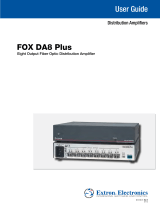 Extron electronics FOX DA8 Plus User manual
Extron electronics FOX DA8 Plus User manual
-
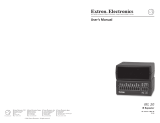 Extron electronics IRL 20 User manual
Extron electronics IRL 20 User manual
-
Extron MTP C7 U R RSA SEQ User manual
-
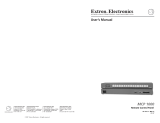 Extron electronics MCP 1000 User manual
Extron electronics MCP 1000 User manual
-
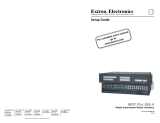 Extron electronics MPX Plus 866 A User manual
Extron electronics MPX Plus 866 A User manual
-
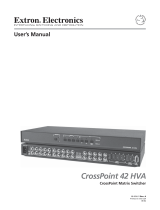 Extron electronics 42 HVA User manual
Extron electronics 42 HVA User manual
-
Extron electronics IN1502 User manual
-
Extron PVT CV D User guide
Other documents
-
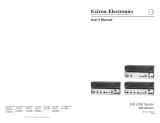 Extron electronics RSB129 User manual
Extron electronics RSB129 User manual
-
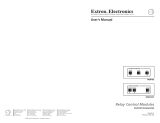 Extron electronics SCP 150 User manual
Extron electronics SCP 150 User manual
-
Extron electronics MLA-VC10 User manual
-
Extron electronic PVT CV User manual
-
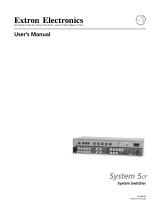 Extron electronics System 5cr User manual
Extron electronics System 5cr User manual
-
Extron electronic VoiceLift User manual
-
Epson MLC 104 IP Plus User manual
-
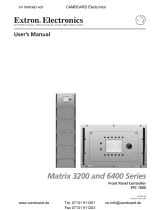 Extron electronics Matrix 3200 Series User manual
Extron electronics Matrix 3200 Series User manual
-
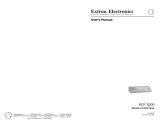 Extron electronics RCP 1000 User manual
Extron electronics RCP 1000 User manual
-
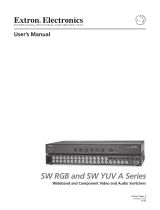 Extron electronics SW6 RGBHV User manual
Extron electronics SW6 RGBHV User manual

















































